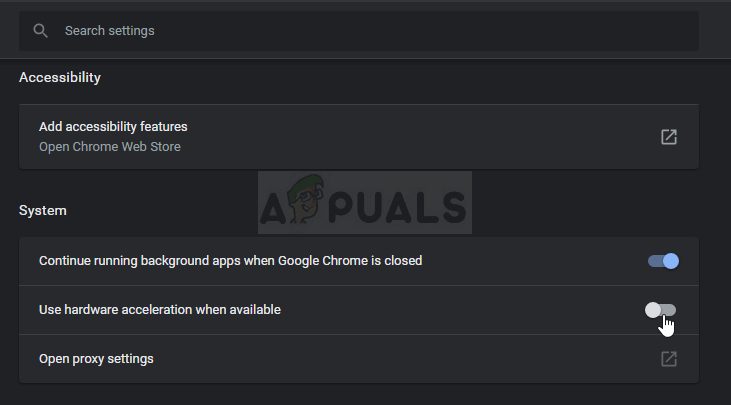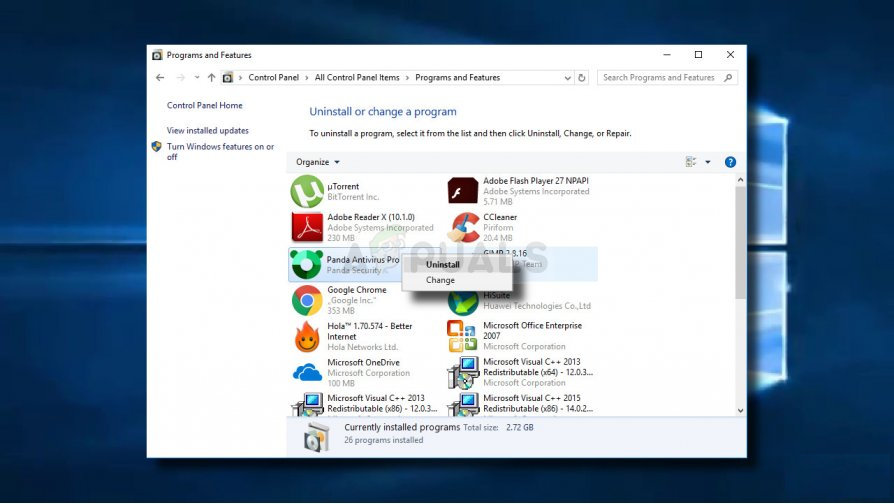How to Fix the Orange Screen of Death Error on Windows?
Everyone is pretty much familiar with the Blue Screen of Death or BSOD as you must have encountered it at least once when using your computer. However, most people don’t know that death also comes in orange as reports talk about the Orange Screen of Death.

It’s exclusive to Windows 10 and it can appear at any time. By design, it’s the same as the BSOD except for the color but it’s not as diverse and it can often be resolved simply by one of the methods we will present below! Check it out.
What Causes the Orange Screen of Death to Occur on Windows?
The Orange Screen of Death is a rare occurrence and there aren’t many standardized solutions based upon the usual causes to the problem. However, there are some triggers which can be blamed for the problem and we have decided to list them out below:
- Faulty drivers – Faulty driver files can trigger this problem and they can be blamed for the most part of the OSOD’s occurrences. The usual culprits are the graphics drivers and network adapter drivers. Make sure you update them to the latest version.
- Hardware acceleration in Chrome – This is a rare cause but some users reported that the only way they managed to resolve the problem was by disabling hardware acceleration in Google Chrome. The problem occurred when streaming Netflix or something similar.
- The antivirus installed – The antivirus you have installed on your computer may be interfering with your system files and causing this problem so we recommend you choose a better alternative.
- Multimedia devices connected to your computer – Multiple multimedia devices such as TVs or other screens to broadcast to can trigger this problem and we recommend you remove them in Devices and Printers.
Solution 1: Install the Latest Drivers on Your Computer
This problem often appears on users’ computers because there is a single driver installed which has gone corrupt and it’s now crashing your entire computer. That is why it’s important to update all drivers on your computer in order to keep them up to date and prevent similar problems from popping up once more. Follow the steps below in order to update all drivers on your computer.
- Open the Start menu by clicking the Start button at the bottom left part of the screen, type in Device Manager, and select it from the list of results at the Start menu. You can also tap the Windows Key + R key combination in order to bring up the Run window. Type in “devmgmt.msc” in the Run box and click OK.

- Expand one of the categories to find the device you want to update, then right-click on it, and select Update Driver. For graphics cards, expand the Display adapters category, right click your graphics card and select Update Driver. Many users agree that many ODODs are actually graphics related or they are related to network adapters.

- Select Search automatically for updated driver software in order to conduct an online search for the newest driver.
- If Windows doesn’t find a driver using the method presented above, you can try looking for it on the device manufacturer’s website and follow their instructions to install the latest driver. You will need to repeat the same process for all devices you consider the culprit or you can use an automated tool to do this for you.

Solution 2: Turn off Hardware Acceleration in Chrome
Some users have reported that the Orange Screen of Death is known to appear if you are using Google Chrome to watch Netflix or some other video streaming service. It’s a weird way to resolve the problem but it’s a bug which should be fixed in the most recent updates. Follow the steps below in order to disable hardware acceleration in Chrome.
- Open the Google Chrome browser on your PC by double-clicking its icon from the Desktop or by searching for it in the Start menu.
- Click the three horizontal dots at the upper-right part of the browser’s window. It should say Customize and control Google Chrome when you hover above the button. This will open a dropdown menu.

- Click the Settings option near the bottom of the dropdown menu which will open and scroll down to the bottom of this page until you reach the Advanced, Make sure you click it in order to expand more advanced options.
- Scroll to the bottom of the expanded window again until you reach the System Uncheck the box next to the Use hardware acceleration entry in order to disable the use of hardware acceleration in Google Chrome.

- Make sure you restart your browser by closing and reopening Google Chrome and check to see if the Orange Screen of Death still appears.
Solution 3: Change the Antivirus Software You Are Using
Free antivirus tools can be quite helpful and they can do their job protecting your computer but sometimes they just don’t get along well with other things on your computer and they cause system instability along with possible crashes. Consider replacing your antivirus if it causes this problem while it’s turned on!
- Click on the Start menu and open Control Panel by searching for it. Alternatively, you can click on the gear icon in order to open settings if you are using Windows 10.
- In Control Panel, select to View as – Category at the top right corner and click on Uninstall a Program under the Programs section.

- If you are using the Settings app, clicking on Apps should immediately open a list of all installed programs on your PC.
- Locate your antivirus tool in Control Panel or Settings and click on Uninstall.
- Its uninstall wizard should open so follow the instructions to uninstall it.

- Click Finish when the uninstaller completes the process and restart your computer to see whether errors will still appear. Make sure you choose a better antivirus option.
Solution 4: Remove Some Multimedia Devices in Devices and Printers
If you have multiple multimedia devices connected to your computer at once or if they are recognized inside Devices and Printers, the Orange Screen of Death might occur since the issue is often graphics related. Removing the devices can resolve the problem and you can later determine which device was causing the problems.
- Open Control Panel by searching for the utility in the Start button or by clicking the Search button (Cortana) button at the left part of your taskbar (bottom left part of your screen.
- You can also use the Windows Key + R key combo where you should type “control.exe” and click Run which will also open Control Panel directly.

- After Control Panel opens, change the view to Category and click on View devices and printers under Hardware and Sound in order to open this section.
- Head over to the Multimedia Devices section, right-click the device you want to remove (the one which is causing these issues) and choose the Remove device Confirm any dialog options which may pop up.

- Make sure you remove devices until there the problem ceased to appear. The problem often occurs when connecting multiple TVs or other screens to broadcast to make sure you focus on them in order to get rid of the Orange Screen of Death.





